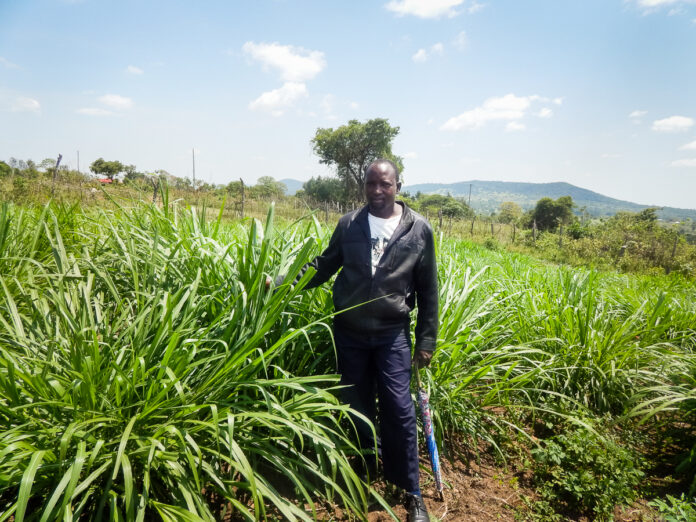Napier grass can be intercropped with various legume crops and shrubs. Intercropping with legumes improves the quality of the fodder and soil fertility.
Examples of legumes that are commonly intercropped with Napier grass are;
- Desmodium
- Sesbania
- Calliandra
- Gliricidia
- Mulberry
- Leucaena
Intercropping with Desmodium
Desmodium is a legume that successfully grows together with Napier grass. To establish a mixed stand of Desmodium and Napier grass;
- First establish Desmodium in a clean seed bed.
- The recommended spacing for establishing Desmodium is the recommended spacing of Napier grass.
- At planting Desmodium is mixed with an inoculant.
- 1 kg of Desmodium seed is needed to plant one acre.
- At planting DAP can be used at a rate of 1 bag per acre.
- After germination the field should be weeded and Napier grass can be planted in the same rows with Desmodium at 60cm between rows.
- Cane cuttings are recommended as planting materials.
Intercropping with Fodder Crops
Fodder shrubs provide a valuable feed supplement for dairy cows and dairy goats and wood fuel for household consumption.
Examples of fodder shrubs that are commonly intercropped with Napier grass are;
- Sesbania
- Calliandra
- Gliricidia
- Mulberry
- Luceana
Farmers can either establish their own nurseries or use seedlings from recommended suppliers/ registered tree nurseries, KEFRI centers, ICRAF.
Fodder shrubs can be planted on the hedge of Napier grass farm or within the rows of an established crop of Napier grass.
Along the hedge rows recommended spacing is 5 meters apart
While the recommended spacing for intercropping within the Napier grass is 5 rows of Napier grass between two rows of fodder trees.
Napier Grass Varieties
The following Napier Grass varieties are available in Kenya for use;
French Cameroon
- Has thin stems & not very hairy. It is a High yielding variety
Banana grass
- Have characteristic thick hairy stems. It is a High yielding variety
Kakamega I, Kakamega II, Kakamega III
- Have thin stems and are tolerant to head smut.
Uganda hairless
- Have a characteristic thin hairless stems and narrow leaves. It is less yielding, and highly susceptible to frost and diseases.
Clone 13
- Resistant to snow mould fungal disase











